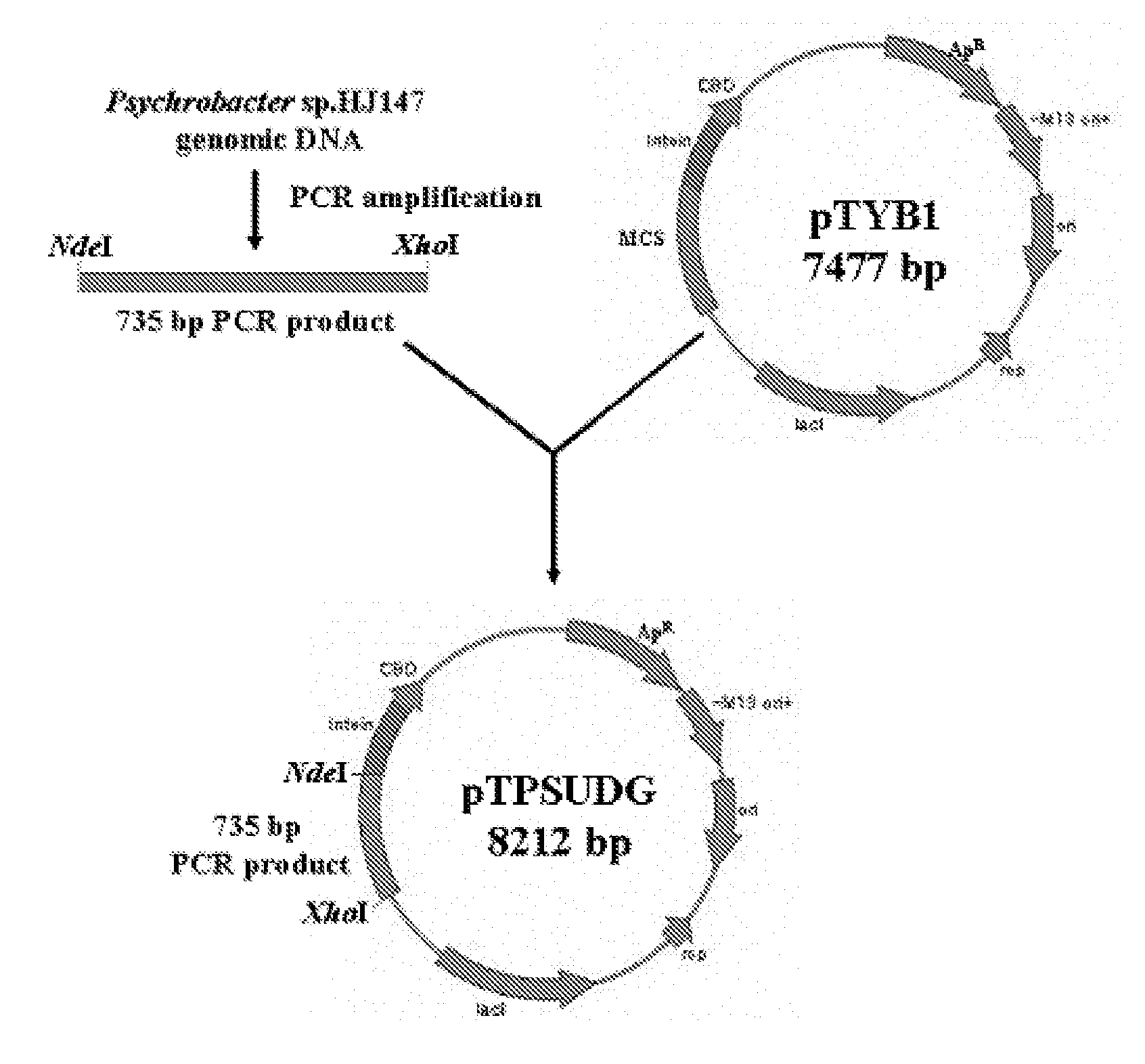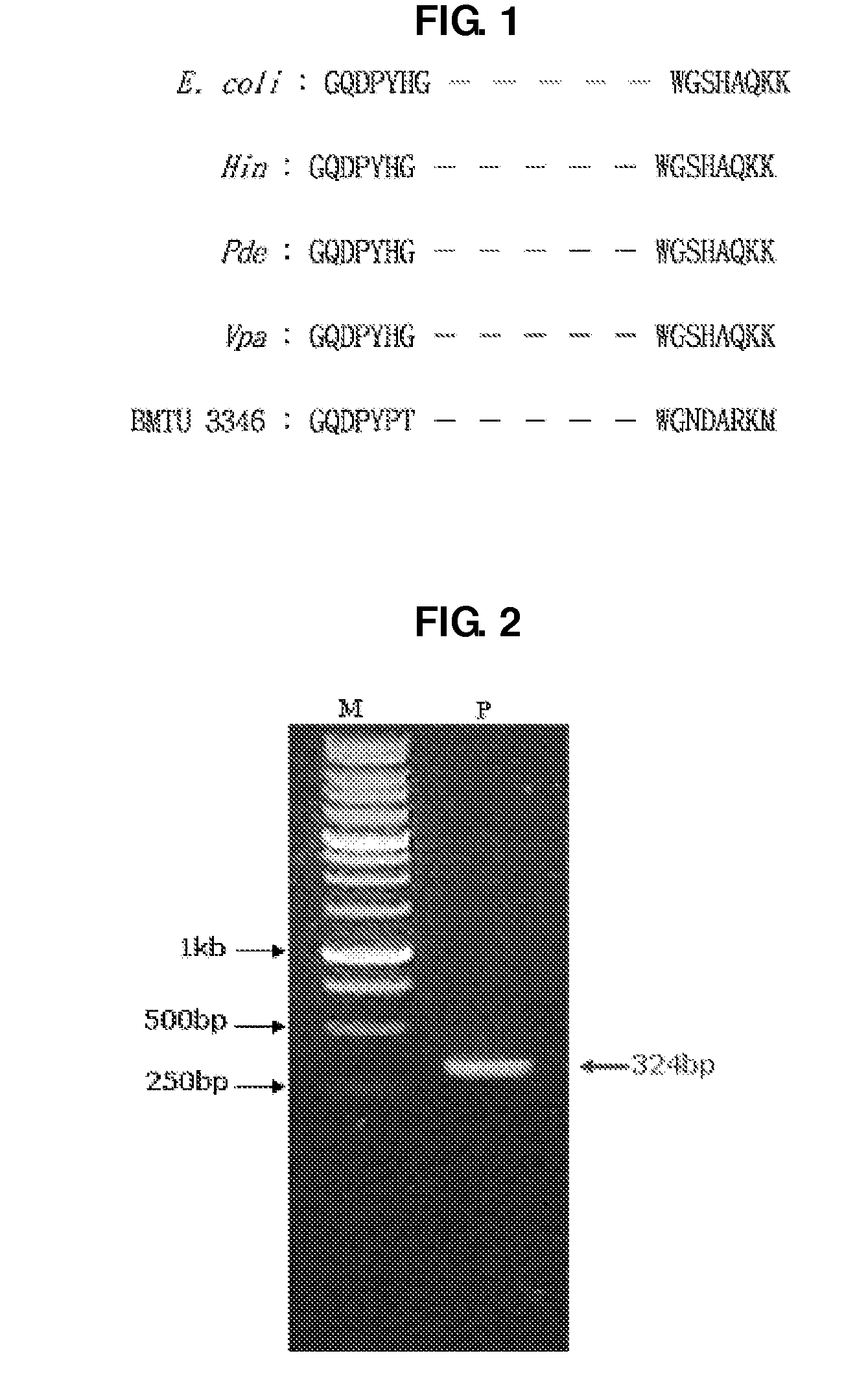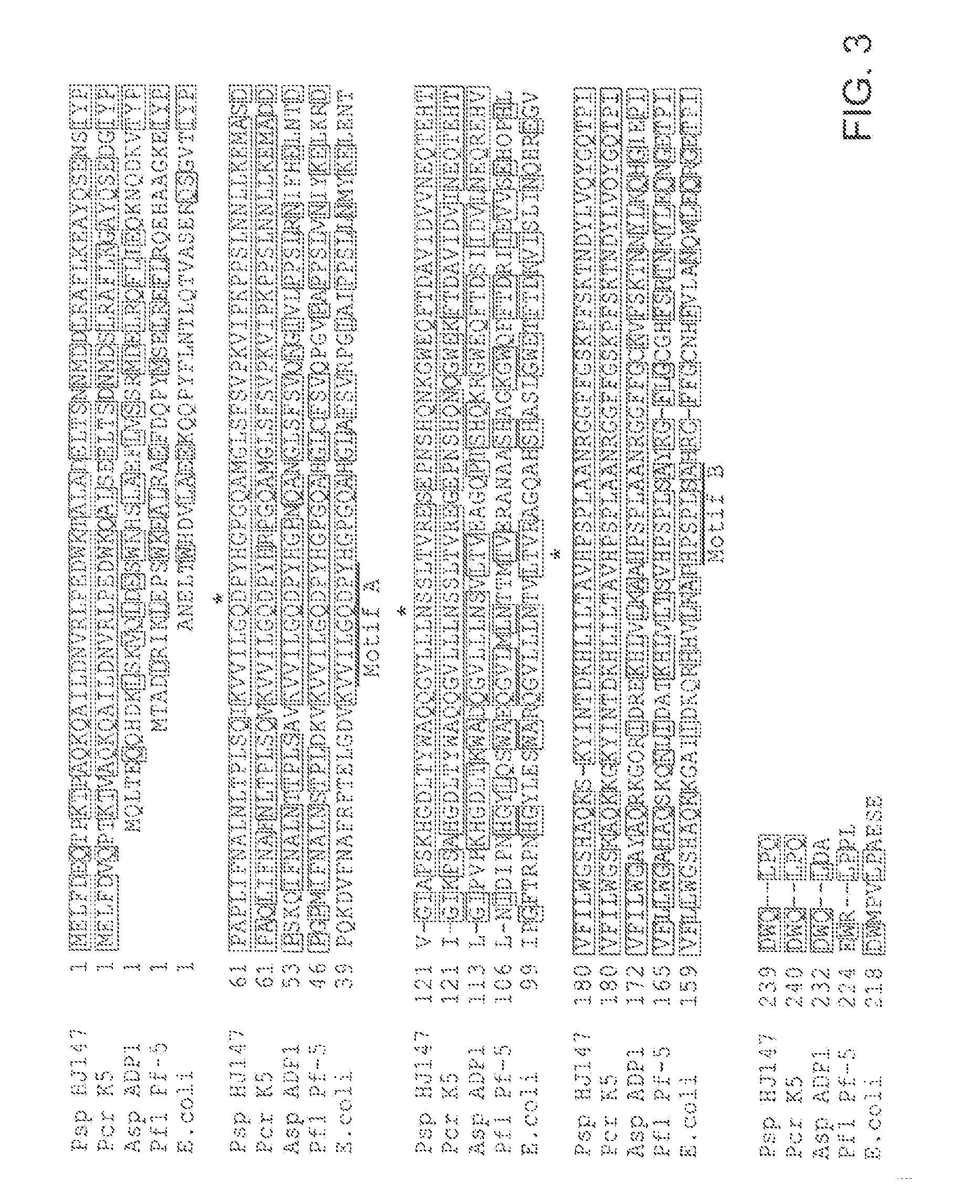Uracil-DNA glycosylase of psychrobacter sp. HJ147 and use thereof
a technology of psychrobacter and uracildna glycosylase, which is applied in the field of uracildna glycosylase of psychrobacter sp. hj147, can solve the problems of wrong diagnosis, different reaction efficiency, and difficulty in detecting the nucleic acid of interest, so as to eliminate cross contamination and carry-over contamination
- Summary
- Abstract
- Description
- Claims
- Application Information
AI Technical Summary
Benefits of technology
Problems solved by technology
Method used
Image
Examples
example 1
Cloning of UDGgene
[0055]In search of a novel UDG gene that is active at a low temperature, the present inventors obtained genomic DNA of Psychrobacter sp. HJ147 that is a psychrophile taken from the surface of the sea in Hujin harbor, from KORDI. This strain systematically belongs to γ-protobacteria, by using 16S rRNA, and shows a 99% sequence homology with the base sequence of 16S rRNA of Psychrobacter urativorans (GenBank No. AJ609555). The genomic DNA of Psychrobacter sp. HJ147 obtained from KORDI was used as a template, and primers represented as SEQ ID. NOs: 3 and 4, as shown below, were prepared with reference to the amino acids of well-conserved regions among the conventionally known UDG gene of Escherichia coli (E. coli), Haemophilus influenzae (Hin), Pseudomonas denitrificans (Pde), Vibrio parahaemolyticus (Vpa) and a marine psychrophile, BMTU3346. With the prepared template and primers, PCR was conducted, using the following temperature profile: initial denaturation at 95°...
example 2
Cloning of the Entire UDG Gene
[0057]Cloning of the entire UDG gene of Psychrobacter sp. HJ147 was attempted by using the 324 bp DNA base sequence of UDG of Psychrobacter sp. HJ147 obtained from Example 1 as described below. For cloning of the entire UDG gene, an inverse PCR method was employed [See: Ogasawara, N., et al., DNA Res, 1, 1-14, 1994]. The inverse PCR is a method for identifying unknown flanking sequences by amplifying the unknown sequences, using an already known sequence.
[0058]Firstly, genomic DNA of Psychrobacter sp. HJ147 was completely digested with HindIII, and treated with phenol for purification. About 1 μg of the purified DNA fraction was taken, T4 DNA ligase and a reaction buffer solution were added thereto to make the volume 20 μl in total. The resulting mixture underwent self-ligation at 16° C. overnight. For conducting inverse PCR with the ligated DNA product as a template, two internal primers (SEQ ID NOs: 5 and 6) were prepared by using a base sequence of t...
example 3
Expression of Recombinant Uracil-DNA Glycosylase (UDG)
[0062]Genomic DNA of Psychrobacter sp. HJ147 was amplified by PCR with the use of primers of SEQ ID. NOs: 7 and 8 which comprise NdeI and XhoI sites artificially inserted thereto to obtain an amplified UDG gene product. The amplified 732 bp fragment (exclusive of a stop codon) of a UDG gene was fractionated on 1.2% agarose gel. The DNA fragment was digested with NdeI and XhoI, and purified. Further, a multiple cloning site. (MCS) of an expression vector pTYB1 which has T7 promoter was purified by cutting with NdeI and XhoI. An appropriate amount of pTYB1 vector digested with NdeI and XhoI, and 732 bp of UDG gene digested with NdeI and XhoI were mixed together, and the mixture was allowed for a ligation reaction at 16° C. overnight with T4 DNA ligase so as to construct an expression vector pTPSUDG (See, FIG. 4). For reference, pTYB1 vector (New England Biolabs, US) has 7,477 bp, and is arranged in the following order: T7 promoter,...
PUM
| Property | Measurement | Unit |
|---|---|---|
| molecular weight | aaaaa | aaaaa |
| temperature | aaaaa | aaaaa |
| temperature | aaaaa | aaaaa |
Abstract
Description
Claims
Application Information
 Login to View More
Login to View More - R&D
- Intellectual Property
- Life Sciences
- Materials
- Tech Scout
- Unparalleled Data Quality
- Higher Quality Content
- 60% Fewer Hallucinations
Browse by: Latest US Patents, China's latest patents, Technical Efficacy Thesaurus, Application Domain, Technology Topic, Popular Technical Reports.
© 2025 PatSnap. All rights reserved.Legal|Privacy policy|Modern Slavery Act Transparency Statement|Sitemap|About US| Contact US: help@patsnap.com



